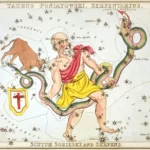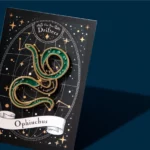The Legend of Ophiuchus: Exploring the Ancient Greek Mythology
In the vast realm of Greek mythology, there lies a captivating tale that often goes unnoticed amidst the well-known stories of gods and heroes. This is the legend of Ophiuchus, a figure whose origins and significance remain shrouded in mystery. With its intriguing connections to the demigod of medicine, Asclepius, and its influence on astrology, Ophiuchus holds a unique place in ancient folklore. Join us as we delve into the depths of this forgotten myth, uncovering its historical representations, its role in the modern world, and the controversies that surround it. Discover the enigmatic Ophiuchus and unlock the secrets of an ancient mythological treasure.
Contents
- The Origins of Ophiuchus
- The Mythological Significance
- The Story of Asclepius
- Ophiuchus in Astrology
- Historical Representations of Ophiuchus
- Ophiuchus and the Modern World
- Conclusion
- Frequently Asked Questions
- References
-
Frequently Asked Questions
- What is Ophiuchus in Greek mythology?
- What is the story behind Ophiuchus?
- What is the connection between Ophiuchus and Asclepius?
- Who is Asclepius in Greek mythology?
- What is the significance of Asclepius and the serpent?
- What is the Ophiuchus zodiac sign?
- What are the characteristics and traits associated with Ophiuchus?
- How is Ophiuchus represented in art and symbolism?
- Are there any astronomical alignments related to Ophiuchus?
- Is Ophiuchus well-known in popular culture?
- References
- Read More
The Origins of Ophiuchus
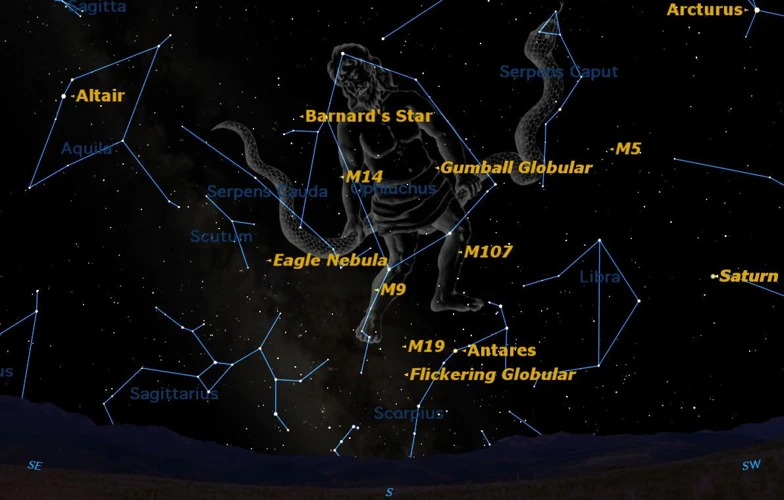
The Origins of Ophiuchus
The origins of Ophiuchus are shrouded in mystery, much like the constellation itself. Ophiuchus, also known as the “serpent-bearer,” has roots in ancient Greek mythology. According to one myth, Ophiuchus is associated with the figure of Asclepius, the demigod of medicine. Another myth suggests that Ophiuchus represents the god Apollo, who is also associated with healing. The exact origins and significance of Ophiuchus are still a subject of debate among scholars and astronomers.
One theory about the origin of Ophiuchus traces back to the Babylonians, who identified this constellation as the god Enki, the lord of wisdom and magic. In ancient Egypt, the serpent was a symbol of wisdom and healing, further adding to the enigma surrounding Ophiuchus.
The constellation of Ophiuchus is located near the celestial equator and is associated with the zodiac sign of Sagittarius. This connection has led to discussions about the inclusion of Ophiuchus as the thirteenth zodiac sign, an idea that has gained popularity in recent years.
Despite its intriguing origins, Ophiuchus has not received as much attention as some of the other constellations in the night sky. Its historical significance and cultural representations have often been overlooked, leaving it to be a hidden gem waiting to be unraveled. In the following sections, we will dive deeper into the mythological significance of Ophiuchus, exploring its connections to Asclepius and its role in astrology.
The Mythological Significance
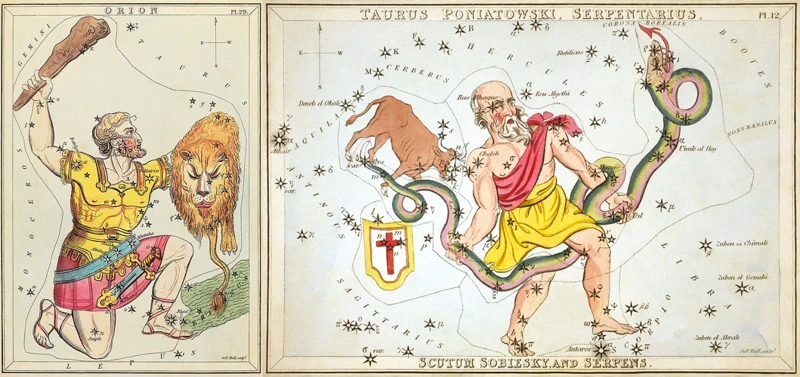
The Mythological Significance
In Greek mythology, Ophiuchus holds a unique and intriguing mythological significance. One of the most prominent connections is with the demigod of medicine, Asclepius. Asclepius, known for his exceptional healing abilities, is believed to be the son of Apollo and Coronis. Legend has it that Asclepius learned the art of medicine from the centaur Chiron and became a renowned healer. Ophiuchus is often associated with Asclepius due to its representation as a serpent-bearer, symbolizing the serpent that played a vital role in Asclepius’ story. This connection between Ophiuchus and Asclepius adds another layer of symbolism to the already enigmatic story. As we unravel the mysterious connections and historical significance of Ophiuchus, we will explore the role it played in ancient Greek mythology and its influence on various aspects of human culture and belief systems.
Ophiuchus and Asclepius: A Connection
Ophiuchus and Asclepius: A Connection
The connection between Ophiuchus and Asclepius, the demigod of medicine in Greek mythology, is a fascinating aspect of the Ophiuchus legend. Asclepius, known for his extraordinary healing abilities, plays a significant role in the story of Ophiuchus.
According to ancient myths, Asclepius was the son of Apollo and a mortal woman named Coronis. Raised by the wise centaur Chiron, Asclepius became a renowned healer, capable of curing the most severe illnesses and even bringing the dead back to life.
The association between Asclepius and Ophiuchus stems from the attribute of healing. In Greek mythology, when Asclepius was tasked with healing a deadly serpent bite, he learned about the power of serpent venom to both harm and heal. Asclepius used this knowledge to develop a serpent-entwined staff, known as the Rod of Asclepius, which became a symbol of healing and medicine.
The Rod of Asclepius is often depicted as a staff with a single serpent wrapped around it. This imagery is intertwined with the constellation of Ophiuchus, where Ophiuchus is portrayed as a figure holding a serpent. The parallel symbolism of serpents and healing connects Ophiuchus and Asclepius in myth and art.
The depiction of Ophiuchus holding a serpent highlights the relationship between this constellation and Asclepius’ healing abilities. This connection has had a notable influence on the representation of Ophiuchus in various forms of art, including sculptures, paintings, and ancient artifacts.
Understanding the link between Ophiuchus and Asclepius adds depth to the enigmatic story of Ophiuchus. The intertwining of mythological figures and their symbolic representations sheds light on the historical significance and cultural relevance of Ophiuchus. To further explore the historical significance of Ophiuchus and its association with Asclepius, we will delve into its portrayal in artworks and the mysteries that surround it.
The Story of Asclepius
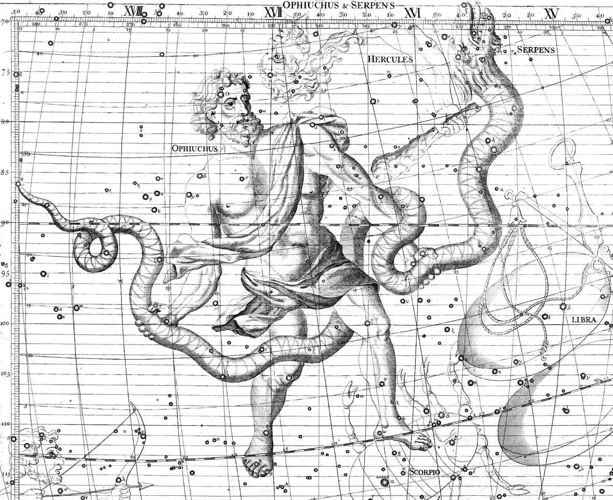
The Story of Asclepius
In Greek mythology, Asclepius emerges as a pivotal figure closely associated with the legend of Ophiuchus. Son of Apollo and the mortal princess Coronis, Asclepius would go on to become the demigod of medicine. His remarkable skills in healing drew the attention of both gods and mortals. One famous tale tells the story of Asclepius resurrecting a dead man using the blood of the Gorgon Medusa, a feat that angered Zeus and ultimately led to Asclepius’ demise. However, Zeus recognized the importance of Asclepius’ healing abilities and placed him among the stars as the constellation Ophiuchus. Asclepius’ representation as a celestial figure further underscores the connection between Ophiuchus and the healing arts, solidifying the significance and revered status of both Asclepius and Ophiuchus in Greek mythology and beyond.
Asclepius: The Demigod of Medicine
Asclepius, the demigod of medicine, plays a significant role in the mythological connections to Ophiuchus. Born to the mortal woman Coronis and the god Apollo, Asclepius had a natural talent for healing from a young age. He surpassed all others in the art of medicine, becoming a renowned physician. The tales of his miraculous healing abilities spread far and wide, earning him great fame and respect.
Asclepius’ association with Ophiuchus stems from the mythological belief that he was the great serpent-bearer. According to one version of the story, Asclepius once encountered a snake shedding its skin. Witnessing this natural process, he observed that the serpent, after shedding its old skin, emerged renewed and revitalized. Inspired by this sight, Asclepius believed that the serpent’s ability to heal itself symbolized the power of rejuvenation and restoration.
This encounter with the serpent led to Asclepius incorporating serpents into his healing practices. In ancient Greece, non-venomous snakes were often kept in temples dedicated to Asclepius. These snakes slithered freely among the patients seeking healing, believed to possess the power to cure diseases.
Asclepius became a central figure in ancient Greek medicine, and his cult spread throughout the Mediterranean region. Temples called “Asclepieions” were built in his honor, where people would flock for healing and seek divine intervention. These temples served as sanctuaries for the sick and the suffering, offering both physical and spiritual healing.
It is this connection between Asclepius and the serpent that links him closely to Ophiuchus. The serpent, symbolizing wisdom, healing, and transformation, further emphasizes the intricate relationship between Asclepius and Ophiuchus. With their intertwined stories, Asclepius and Ophiuchus continue to captivate our imaginations, reminding us of the ancient traditions and legends that have shaped our understanding of medicine and healing.
To learn more about the historical significance of Ophiuchus and its ties to Asclepius, continue reading here.
Asclepius and the Serpent
Asclepius and the Serpent
One of the most fascinating aspects of the Ophiuchus myth is its connection to Asclepius and the serpent. Asclepius, the demigod of medicine, played a crucial role in ancient Greek mythology. According to legend, Asclepius possessed remarkable healing abilities and the power to resurrect the dead. It is said that he learned the art of medicine from the wise centaur Chiron and became renowned for his ability to cure various ailments.
The association between Asclepius and the serpent is a central theme in his mythological story. Asclepius is often depicted holding a staff with a serpent wrapped around it, known as the Rod of Asclepius. This symbol has become synonymous with medicine and is still widely recognized today as the emblem of the medical profession.
The story behind Asclepius and the serpent originates from a myth where Asclepius was entrusted with a secret by a snake. In this myth, a snake brought a herb called “Asclepius” to Asclepius himself, revealing its healing properties. This event marked the beginning of Asclepius’s journey to become a great healer.
The symbolism of the serpent in Asclepius’s story is multi-faceted. In ancient Greek culture, serpents were often associated with healing, knowledge, and wisdom. The shedding of the serpent’s skin symbolized renewal and rejuvenation, while its ability to slither and move smoothly represented the flow and balance of life forces. The intertwining of the serpent around Asclepius’s staff emphasized the connection between healing and wisdom.
The story of Asclepius and the serpent highlights the close relationship between medicine and the divine in ancient Greek mythology. Asclepius’s healing abilities and his association with the serpent have left a lasting impact on the field of medicine. To this day, the symbol of the serpent and staff continues to be used as a representation of healing and healthcare.
The connection between Asclepius and Ophiuchus adds another layer of intrigue to the myth. Ophiuchus, the serpent-bearer, is believed to be closely linked to Asclepius and his healing practices. This connection will be further explored in the next section, where we delve into the role of Ophiuchus in astrology and its traits and characteristics.
Ophiuchus in Astrology
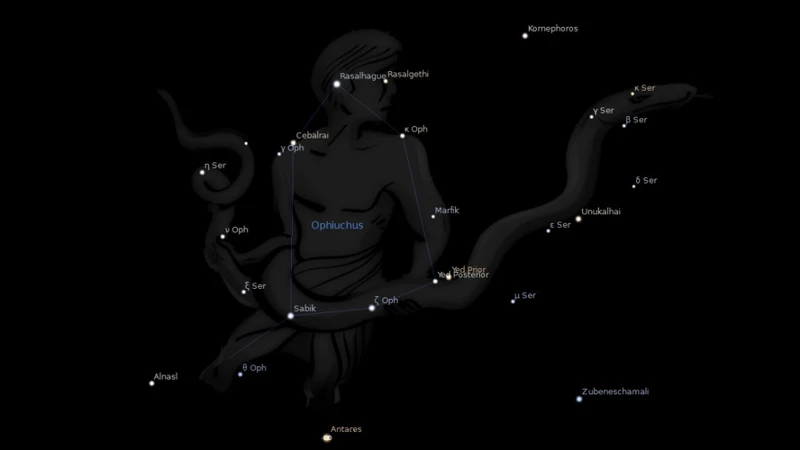
Ophiuchus in Astrology
Ophiuchus, the serpent-bearer, occupies a unique place in the realm of astrology. While traditionally the zodiac consists of twelve signs, Ophiuchus has recently gained attention as the potential thirteenth sign. This addition stems from the alignment of the Earth’s axis, leading to discussions about the inclusion of Ophiuchus in the zodiac system. Astrologically, Ophiuchus is associated with traits such as intuition, healing, and wisdom. Those born under this sign are said to possess a deep understanding of human nature and the ability to bring about transformation and change. Ophiuchus is believed to hold a powerful energy, often symbolized by the image of a serpent entwined around a staff, representing healing and rebirth. While its role in astrology remains a subject of debate, Ophiuchus continues to intrigue and captivate those who seek to unravel the mysteries of the zodiac. For more insight on the influence of Ophiuchus traits on famous artists, click here.
The Ophiuchus Zodiac Sign
The Ophiuchus Zodiac Sign
The Ophiuchus zodiac sign is a subject of fascination and debate among astrologers and enthusiasts. While the traditional zodiac consists of twelve signs, Ophiuchus is often referred to as the “13th zodiac sign.” Represented by the serpent-bearer, Ophiuchus lies between Scorpio and Sagittarius on the celestial chart.
Ophiuchus is associated with various characteristics and traits that differentiate it from the other zodiac signs. People born under this sign are often described as intuitive, philosophical, and spiritual. They possess a deep understanding of the mysteries of life and have a natural inclination towards healing and medicine. Ophiuchus individuals are also known for their passionate nature, seeking truth and justice in all aspects of life.
Despite its intriguing qualities, the inclusion of Ophiuchus as a zodiac sign has been a topic of controversy in the astrological community. Some argue that incorporating Ophiuchus disrupts the established order of the zodiac system, while others advocate for its recognition and exploration.
To delve further into the enigmatic nature of Ophiuchus as a zodiac sign, researchers have been uncovering the mysterious origins and historical significance of this celestial constellation. By studying ancient texts and astronomical alignments, experts strive to unravel the dating and cultural significance of Ophiuchus in different civilizations.
While the debate about the Ophiuchus zodiac sign continues, it offers a fascinating opportunity to explore the diverse interpretations and possibilities within astrology. Whether you align with the traditional twelve signs or delve into the mysteries of Ophiuchus, astrology provides a framework for understanding ourselves and the world around us.
Characteristics and Traits
Characteristics and Traits
Ophiuchus, as a celestial symbol and a zodiac sign, is believed to possess unique characteristics and traits. Despite its lesser-known status, those born under the sign of Ophiuchus are said to exhibit exceptional qualities. Individuals associated with Ophiuchus are often described as having a deep sense of intuition, wisdom, and healing abilities – traits closely linked to the mythological figure of Asclepius.
One notable characteristic of Ophiuchus is their strong desire for knowledge and understanding. They possess a thirst for learning and are constantly seeking to expand their horizons intellectually. This curiosity can lead them on journeys of self-discovery and exploration, as they constantly strive for personal growth.
Additionally, Ophiuchus individuals tend to have a natural inclination towards healing and helping others. They possess a compassionate nature and have a deep empathy for the suffering of others. This is in alignment with the healing abilities attributed to Asclepius, whose connection to Ophiuchus further enhances these traits.
People born under Ophiuchus are known to possess strong intuition and a sense of intuition that guides their decision-making process. They have a keen ability to read situations and people, allowing them to offer insightful advice and guidance to those who seek their help. This intuitive nature often earns them the trust and admiration of others.
However, it is important to note that Ophiuchus individuals, like any other zodiac sign, are unique individuals with a range of personalities and traits. While there may be common characteristics associated with Ophiuchus, each person’s experiences and upbringing contribute to shaping their individuality.
To further unravel the mysterious traits and characteristics of Ophiuchus, one can explore their historical significance and cultural representations. Understanding the context in which Ophiuchus has been portrayed in ancient mythologies and astrological interpretations can shed light on the fascinating attributes of this lesser-known zodiac sign.
Historical Representations of Ophiuchus
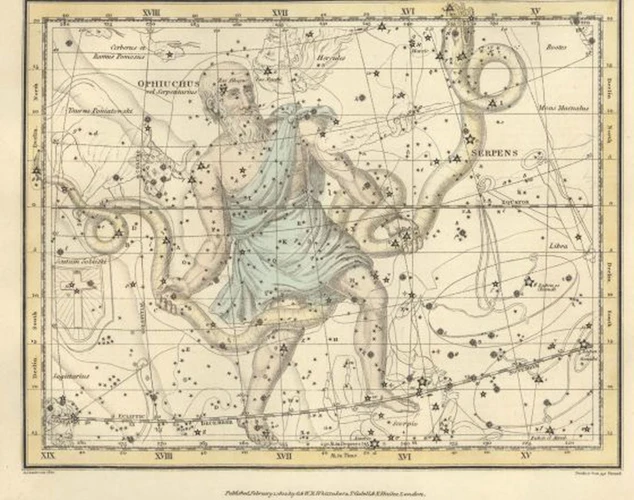
Historical Representations of Ophiuchus
Throughout history, Ophiuchus has been depicted in various art forms, carrying significant symbolism from different cultures. In ancient Greek and Roman art, Ophiuchus is often portrayed as a figure holding a serpent, representing the serpent-bearer constellation. This portrayal symbolizes the connection between Ophiuchus and the healing arts, as serpents were associated with wisdom and rebirth. The symbol of Ophiuchus, a serpent coiled around a staff, is still used as an emblem of medicine and is known as the Rod of Asclepius. Artists from different eras have sought to capture the enigmatic allure of Ophiuchus, showcasing its mysterious nature through their work. From ancient sculptures to modern paintings, Ophiuchus continues to captivate and intrigue the artistic world. Its historical representations serve as a testament to the enduring fascination surrounding this constellation and its mythical origins.
Art and Symbolism
Art and Symbolism
In the realm of art and symbolism, Ophiuchus has made its mark in various cultures throughout history. The depiction of Ophiuchus in ancient artworks often portrays a figure holding a serpent, representing the constellation’s association with healing and medicine. This symbolism can be traced back to the Greek myth of Asclepius, the demigod of medicine, who was often depicted with a staff entwined by a serpent, known as the Rod of Asclepius. This symbol has become synonymous with the medical profession.
Ophiuchus has also found its way into the world of astrology and zodiac signs. While it is not officially recognized as a zodiac sign, its representation can be seen in various astrological charts and illustrations. Artists have depicted Ophiuchus with unique characteristics, blending human and serpent-like features to capture the essence of this mystical constellation.
In addition to visual art, Ophiuchus has been a source of inspiration for poets and writers. Its enigmatic nature and association with healing have sparked the imagination of many, leading to the creation of captivating stories and verses. The symbol of Ophiuchus often serves as a reminder of the hidden knowledge and wisdom that resides within the realms of mythology.
As we continue to unravel the mysterious aspects of Ophiuchus, exploring its historical significance and cultural representations, we begin to understand the depth of its impact on various artistic expressions. From ancient sculptures to modern illustrations, Ophiuchus remains a symbol of healing, wisdom, and the intriguing interplay between humans and serpents. Dive into the world of Ophiuchus and uncover the hidden connections that weave through art and symbolism.
Astronomical Alignments
Astronomical Alignments
The constellation of Ophiuchus holds intriguing astronomical alignments that have fascinated astronomers and stargazers alike. One notable alignment is the positioning of Ophiuchus along the ecliptic, which is the path the Sun appears to follow across the sky throughout the year. This celestial alignment places Ophiuchus between Scorpius and Sagittarius, adding to its enigmatic presence in the night sky.
Additionally, Ophiuchus is associated with a prominent cluster of stars known as the Serpentarius Cluster, which lies within its boundaries. This cluster, also called Messier 9, consists of thousands of stars packed tightly together, creating a mesmerizing sight for astronomers observing the constellation.
Ophiuchus is known for its close proximity to the Milky Way. Its position within the galactic plane allows for stunning views of the cosmic band of stars and interstellar gas and dust that make up our galaxy. This alignment provides a unique perspective, offering stargazers a chance to appreciate the vastness and beauty of the universe.
It’s worth noting that while Ophiuchus has its own distinct astronomical alignments, its exclusion from the traditional zodiac signs has led to debates and discussions among astrologers. Some argue that the alignment of the planets and other celestial bodies should also consider Ophiuchus as a valid zodiac sign. This ongoing dialogue highlights the ongoing fascination with this constellation and its potential for interpretation within astrology.
As we unravel the mysterious origins and cultural significance of Ophiuchus, we will continue to explore its astronomical associations and the captivating alignments that make it a captivating celestial wonder. Now let us delve further into the controversies and misunderstandings surrounding Ophiuchus in the modern world.
Ophiuchus and the Modern World
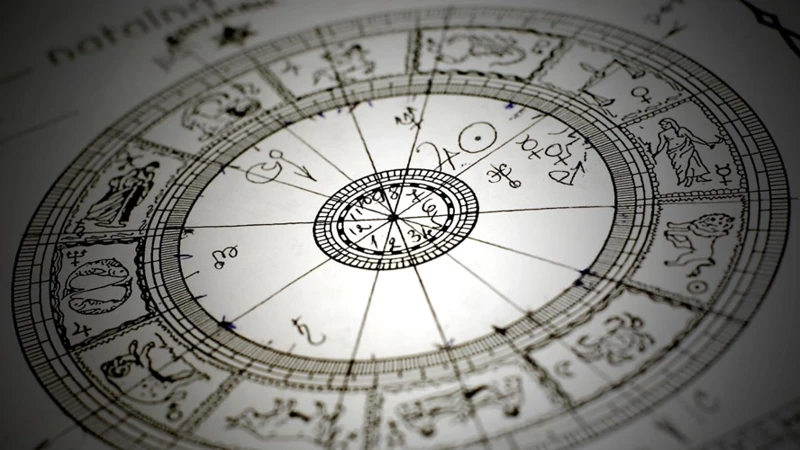
Ophiuchus and the Modern World
In the modern world, Ophiuchus continues to captivate the imagination, although its place within astrology remains a topic of controversy and misunderstanding. Some astrologers have advocated for the inclusion of Ophiuchus as the thirteenth zodiac sign, challenging the traditional twelve-sign system. They believe that Ophiuchus possesses distinct characteristics and traits that influence individuals born under its alleged dates. However, this proposed addition has faced criticism and skepticism from those who adhere to the traditional zodiac system. Despite the debates, Ophiuchus has gained popularity as people explore its alleged influence on personality traits, relationships, and compatibility. It has also made appearances in popular culture, further contributing to its recognition in the modern world. While the ongoing discussions about Ophiuchus may blur the lines between myth and reality, the allure and mystery surrounding this celestial serpent-bearer endure, captivating those who seek to unravel its enigmatic nature.
Controversies and Misunderstandings
Controversies and Misunderstandings
The inclusion of Ophiuchus as a zodiac sign has sparked controversies and misunderstandings within the astrological community. Traditional Western astrology recognizes twelve zodiac signs, each representing a specific period of the year. However, the possibility of Ophiuchus being the thirteenth sign, with dates spanning November 30th to December 17th, has caused disagreement among astrologers.
One of the main points of contention is the recalibration of the birth chart. If Ophiuchus were to be officially recognized, it would mean that many individuals would no longer identify with their original zodiac sign, but instead align themselves with Ophiuchus. This prospect has stirred debates about the accuracy and validity of astrological predictions.
Another challenge lies in the interpretation of Ophiuchus traits and characteristics. As a relatively unknown sign, there is limited information available regarding the personality traits associated with Ophiuchus. This lack of consensus further fuels the controversies surrounding its recognition and placement within the zodiac.
There are scholars and astronomers who argue that Ophiuchus should not be considered a zodiac sign at all, as it is not part of the traditional zodiac system that has been followed for centuries. They believe that the inclusion of Ophiuchus would disrupt the established understanding of astrology and undermine its credibility.
Despite the disagreements and uncertainties, the idea of Ophiuchus as a thirteenth zodiac sign continues to captivate the curiosity of both astrologers and astrology enthusiasts. Whether Ophiuchus will ever be accepted as an official zodiac sign remains a topic of ongoing discussion and interpretation within the astrological community. For now, its status as an enigmatic constellation on the fringes of the zodiac brings both controversy and intrigue.
Ophiuchus in Popular Culture
Ophiuchus in Popular Culture
Ophiuchus, despite its relative obscurity in ancient mythology, has made its way into popular culture in various forms. In recent times, the inclusion of Ophiuchus as a potential zodiac sign has sparked interest and discussion among astrology enthusiasts. While the traditional zodiac system consists of twelve signs, the idea of incorporating Ophiuchus as the thirteenth sign has gained traction. This concept has been explored in books, articles, and online forums, causing a stir among astrology enthusiasts.
In the realm of literature and entertainment, Ophiuchus has also made appearances. It has been featured in fantasy novels, where the serpent-bearer often carries mystical symbols and possesses unique powers related to healing and wisdom. These representations have added a touch of mystique to Ophiuchus, portraying it as a powerful and enigmatic character.
In the world of art, Ophiuchus has also left its mark. Many artists have been inspired by the concept of Ophiuchus and have incorporated its imagery into their works. Paintings, sculptures, and even tattoos have showcased the serpent-bearer, often depicted alongside serpents or holding a staff with a serpent entwined around it. These artistic interpretations highlight the mythological significance and symbolism associated with Ophiuchus.
Despite its rising popularity, Ophiuchus still remains a subject of controversy and debate. Skeptics argue against its inclusion in astrology, while others embrace the idea of expanding the zodiac to include this fascinating constellation. As Ophiuchus continues to carve its place in popular culture, its enigmatic nature and mythical attributes will undoubtedly continue to captivate and intrigue individuals from all walks of life.
(For more information on the mysterious dating of Ophiuchus, read our article here.)
Conclusion
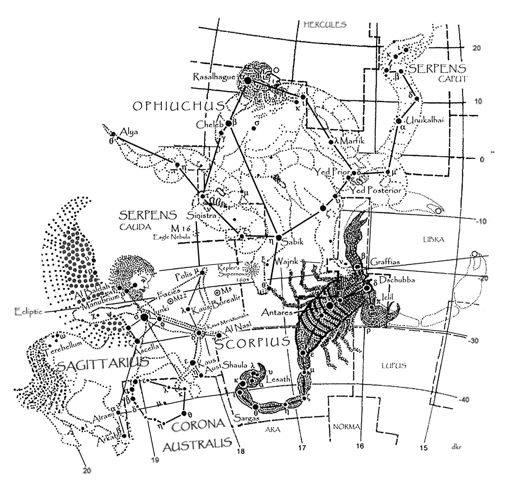
Conclusion
The legend of Ophiuchus is a fascinating tale that intertwines ancient Greek mythology, astrology, and cultural symbolism. Although Ophiuchus has often remained in the shadows, its enigmatic story and historical significance deserve recognition. From its mysterious origins, potentially tied to the demigod of medicine, Asclepius, to its influence on astrology as a potential thirteenth zodiac sign, Ophiuchus holds a unique place in ancient folklore.
Exploring the representations of Ophiuchus in art and symbolism reveals the serpent-bearer’s hidden presence throughout history. From ancient Babylon to Egypt, the figure of Ophiuchus has been associated with healing, wisdom, and magical powers, reflecting the universal human fascination with these themes. Furthermore, the astronomical alignments of Ophiuchus continue to inspire awe and wonder, reminding us of the vastness and beauty of the cosmos.
However, the legend of Ophiuchus has not been without controversy and misunderstandings. The inclusion of Ophiuchus as a thirteenth zodiac sign has raised debates among astrologers and enthusiasts, sparking both excitement and skepticism. While some embrace the idea of an expanded zodiac, others remain skeptical about altering the traditional twelve signs.
Despite its sometimes contentious nature, Ophiuchus has left its mark on popular culture. Whether referenced in literature, film, or other forms of entertainment, Ophiuchus has become a symbol of mystery, hidden knowledge, and untapped potential. Its presence in the modern world showcases the enduring power of ancient mythology to captivate and inspire.
In conclusion, the legend of Ophiuchus is a fascinating journey into the rich tapestry of Greek mythology. From its elusive origins to its modern-day cultural significance, Ophiuchus invites us to explore the depths of the human imagination and our quest for understanding the mysteries of the universe. As we gaze upon the night sky, let us remember the serpent-bearer and the compelling story it represents.
Frequently Asked Questions
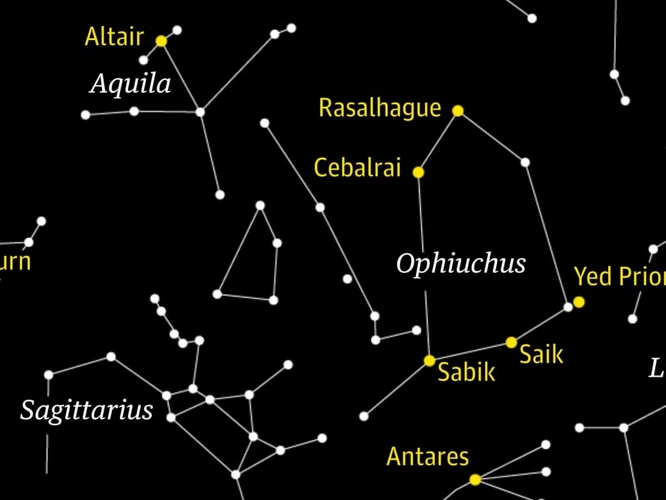
FAQs about Ophiuchus:
1. What does the name “Ophiuchus” mean?
The name “Ophiuchus” is derived from the Greek words “ophis,” meaning serpent, and “ekhein,” meaning to hold or bear. Thus, Ophiuchus is often referred to as the “serpent-bearer.”
2. Is Ophiuchus part of the zodiac?
While Ophiuchus is not traditionally recognized as one of the twelve zodiac signs, it is located near the zodiac sign of Sagittarius. Some astrologers have proposed including Ophiuchus as the thirteenth sign, but this idea remains controversial.
3. What is the mythological significance of Ophiuchus?
Ophiuchus is associated with the figure of Asclepius, the demigod of medicine in Greek mythology. Asclepius is often depicted holding a staff with a serpent wrapped around it, which led to the constellation’s association with healing and medicine.
4. Are there any famous artworks related to Ophiuchus?
Ophiuchus has inspired various artists throughout history. The depiction of Asclepius with the serpent in famous sculptures and paintings symbolizes the healing arts and the pursuit of wisdom.
5. How does Ophiuchus relate to astrology?
In astrology, Ophiuchus is associated with traits such as wisdom, healing abilities, and a deep connection to the spiritual realm. People born between November 29 and December 17 may align with the characteristics attributed to Ophiuchus.
6. Are there any famous individuals associated with Ophiuchus?
While Ophiuchus is not as commonly recognized as other zodiac signs, some notable individuals whose birthdays fall within the Ophiuchus dates include Taylor Swift, Brad Pitt, and Nicki Minaj.
7. Are there any astronomical alignments involving Ophiuchus?
Ophiuchus lies along the ecliptic, the path followed by the Sun and planets. The alignment of Ophiuchus with other celestial bodies during specific times of the year holds importance in astronomical observations.
8. What controversies surround the inclusion of Ophiuchus as a zodiac sign?
The inclusion of Ophiuchus as the thirteenth zodiac sign has sparked debates among astrologers. Critics argue that adding another sign would disrupt the familiar twelve-sign system and require adjustments to astrological charts and interpretations.
9. How can one connect with the energy of Ophiuchus?
To connect with the energy of Ophiuchus, one can explore healing practices, spiritual wisdom, and the pursuit of knowledge. Meditation, journaling, and studying ancient wisdom traditions can help tap into the unique qualities associated with this constellation.
10. Is there a specific gemstone or color associated with Ophiuchus?
Amethyst, a stone known for its healing properties and connection to spirituality, is often associated with Ophiuchus. The color purple, representing wisdom and enlightenment, also resonates with the energy of this constellation.
References
Frequently Asked Questions

What is Ophiuchus in Greek mythology?
Ophiuchus is a figure from Greek mythology who is often associated with healing and medicine. He is depicted as a serpent bearer, holding a snake symbolizing rebirth and transformation.
What is the story behind Ophiuchus?
The story behind Ophiuchus varies in Greek mythology. However, one popular version involves the tale of Asclepius, a demigod known for his healing abilities. Asclepius was eventually transformed into the constellation Ophiuchus after his death.
What is the connection between Ophiuchus and Asclepius?
Ophiuchus and Asclepius are closely connected in Greek mythology. Asclepius, the demigod of medicine, is often depicted as a figure holding a staff with a snake wrapped around it. This representation is similar to the depiction of Ophiuchus as a serpent bearer.
Who is Asclepius in Greek mythology?
Asclepius is a prominent figure in Greek mythology. He is a demigod associated with healing, medicine, and the art of medicine. He is often portrayed as a wise and skilled healer who had the ability to bring the dead back to life.
What is the significance of Asclepius and the serpent?
The serpent is a symbol commonly associated with both Asclepius and Ophiuchus. In Greek mythology, it represents wisdom, rebirth, and the healing arts. Asclepius is often depicted with a serpent wrapped around his staff, symbolizing his ability to heal and bring about transformation.
What is the Ophiuchus zodiac sign?
Ophiuchus is not traditionally recognized as one of the zodiac signs in Western astrology. The zodiac signs are based on the positions of the sun, moon, and planets at the time of a person’s birth. However, some astrologers have introduced Ophiuchus as a 13th zodiac sign.
What are the characteristics and traits associated with Ophiuchus?
As Ophiuchus is not widely recognized in Western astrology, there are no specific characteristics or traits associated with this sign. However, those who resonate with Ophiuchus traits may be seen as healers, wise individuals, and seekers of transformation and spiritual growth.
How is Ophiuchus represented in art and symbolism?
Ophiuchus is often represented in art and symbolism as a figure holding a snake or staff with a serpent wrapped around it. This representation signifies the association with healing, wisdom, and the transformational power of the serpent.
Yes, Ophiuchus is located along the ecliptic, the apparent path of the sun in the sky. This means that the sun passes through the constellation of Ophiuchus for a period during the year. However, as mentioned before, it is not widely recognized as part of the zodiac in Western astrology.
Is Ophiuchus well-known in popular culture?
While Ophiuchus may not be as well-known as the traditional zodiac signs, it has gained some popularity in recent years. It has been referenced in various forms of media, including movies, books, and online discussions about astrology and mythology.




